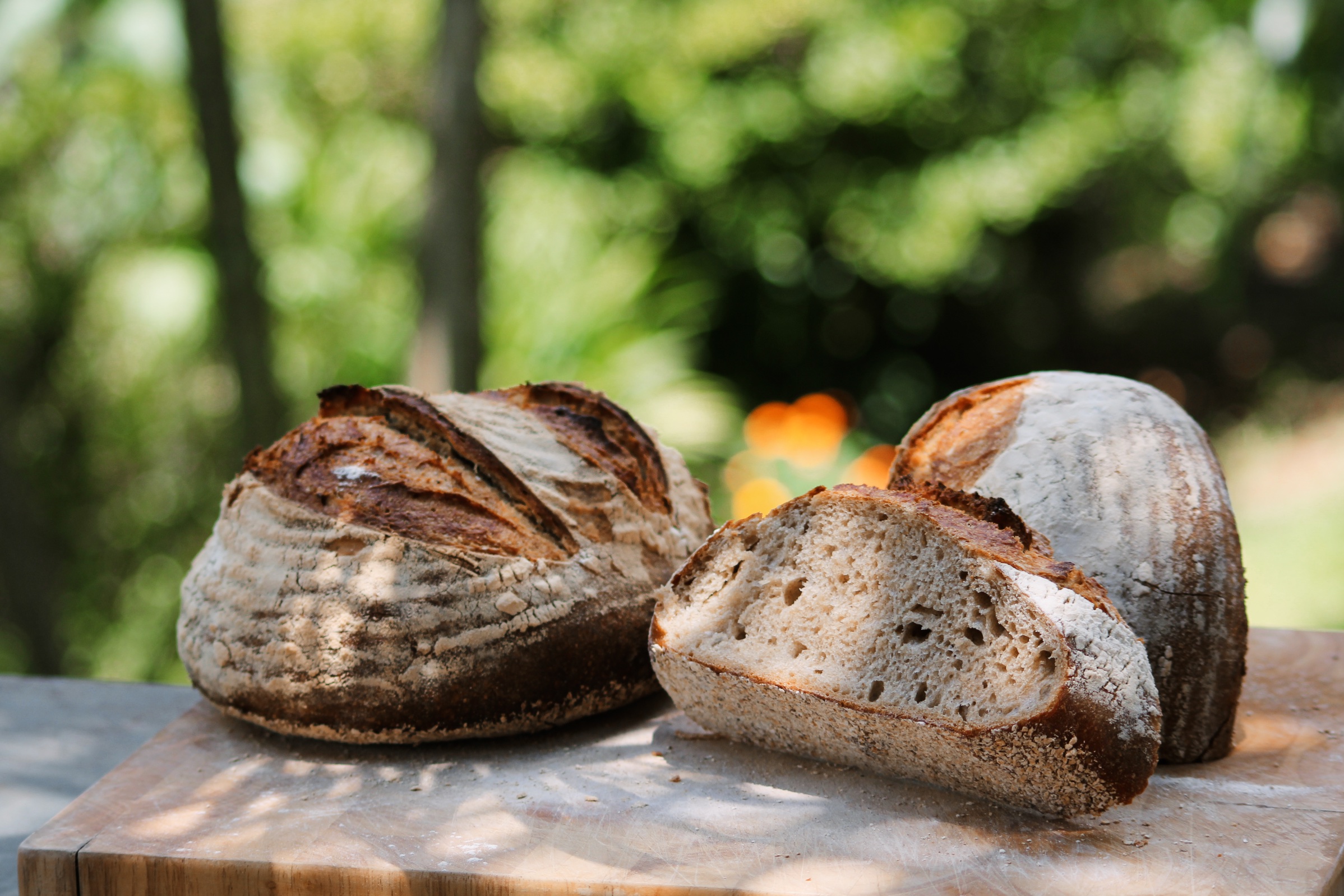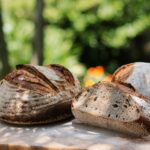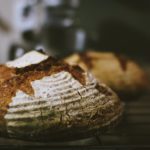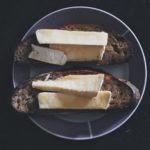Babka de chocolate
Queria muito poder dizer que esse pão amanteigado, fofinho com muito chocolate é pra mim uma memória de infância, mas só provei babka pela primeira vez depois de adulto e “barbado”.
No período que morei em NYC passei um bom tempo em um bairro predominantemente judeu e foi em uma bakery bem tradicional que conheci essa maravilha.
Quando comecei me aventurar na cozinha ousei comentar com o padeiro que queria aprender fazer a famosa babka. Foi um balde de água fria. Lembro dele me dizendo que não era para iniciantes e que era segredo de família. Anos depois resolvi tentar e percebi que fui trolado.
Admito que ainda não consegui reproduzir o gostinho daquela babka, mas essa versão é deliciosa, fácil e não é segredo de família.

Ingredientes (faz 2 unidades – forma de pão 20 x 10 x 6 cm) : 530g farinha, 100g açúcar demerara, 10g colheres de chá de fermento biológico seco, 1/2 colher de chá sal, 130ml água filtrada, 3 ovos, 150g manteiga, Raspas de 1/2 limão siciliano
Recheio: 120g chocolate meio amargo de boa qualidade, 130g manteiga, 50g açúcar confeiteiro, 30g cacau em pó

Cobertura: 20ml de água, 56g açúcar demerara ou cristal
Modo de preparo:
Massa: Na tigela da batedeira combine farinha, açúcar e fermento, raspas de limão, e por último coloque o sal.
Adicione a água e os ovos e usando o gancho de massas bata na velocidade baixa até formar uma massa pesada e desgrenhada.
Adicione a manteiga aos poucos e aumente a velocidade para média até que toda manteiga seja incorporada. Bata por cerca de 5-8 minutos até que a massa fique mais elástica e comece desgrudar das bordas da tigela. Se necessário adicione algumas colheres de chá de farinha para conseguir o resultado (uma colher por vez)
O resultado será uma massa aveludado e macia.
Unte uma tigela com tampa e deixe a massa descansar na geladeira por 8 horas ou de um dia para o outro.
Recheio: Derreta o chocolate e a manteiga em banho maria. Acrescente o açúcar de confeiteiro e cacau e mexa com uma espátula até formar uma pasta.
Cobertura: Leve açúcar e água ao fogo médio até que o açúcar derreta.
Montagem: Retire a massa da geladeira e separe em 2 partes. Abra em formato retangular com medidas aproximadas de 25cm x 30cm e usando uma espátula espalhe o recheio (lembre-se de dividir o recheio para as 2 babkas) deixando cerca de 1 cm de borda. Vai fazer uma bagunça, mas é a parte mais divertida.


Enrole, no sentido do comprimento, apertando bem e sele o final pincelando um pouco de água para ajudar fechar.
Coloque no freezer enquanto prepara a segunda babka.
Retire o rolo do freezer, corte cerca de 1cm no final de cada ponta e com uma faca bem afiada corte o rolo ao meio no sentido do comprimento. Com as camadas de chocolate para cima, trance as 2 metades. Esse processo é para dar efeito visual, mas você pode finalizar como preferir.



Coloque a massa trançada na forma untada e pode colocar as pontas que foram cortadas nos espaços vazios.
Cubra e deixe descansar na forma por cerca de 1-1h30.
Asse as babkas por 20 minutos na temperatura de 190C até ficarem douradas e ao inserir um palito o mesmo saia limpo.
Retire do forno e pincele com a calda de açúcar. Deixe esfriar 10 minutos e desenforme.
É difícil resistir, mas deixe esfriar completamente antes de servir.

Passe um café para acompanhar e aproveite.












 Morando na roça temos aprendido muito sobre horta, orgânicos, alimentação, café, fermentação e tantos outros assuntos que nem imaginávamos um dia saber, mas temos mesmo é aprendido muito sobre nós mesmos.
Morando na roça temos aprendido muito sobre horta, orgânicos, alimentação, café, fermentação e tantos outros assuntos que nem imaginávamos um dia saber, mas temos mesmo é aprendido muito sobre nós mesmos.






